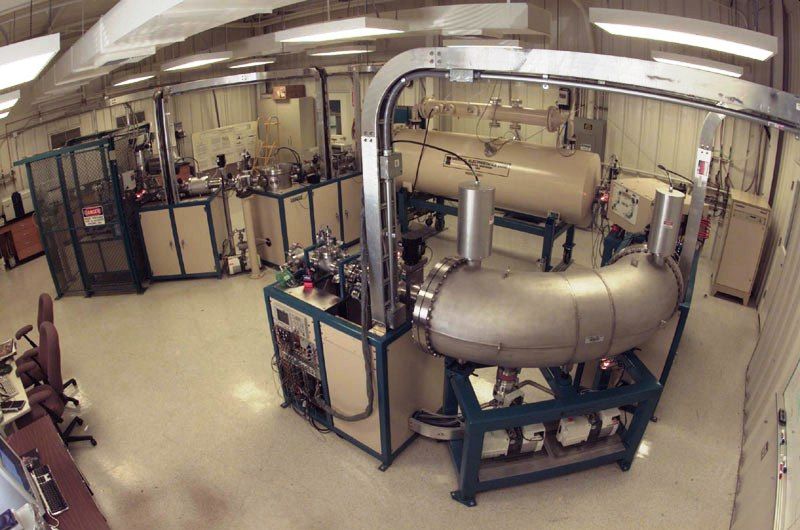Feedback archive → Feedback 2020
Carbon 14—still drawing a blank
Ken W. from Australia e-mailed CMI with a question about carbon dating in relation to Gavin Cox’s recent article on the newly discovered Durrington Circle, near Stonehenge, Salisbury, UK.
In [dating] labs all tests … use known standards or controls, or they go out of business very quickly. Radiometric dating has never used known standards at any time … Except for falsely ascribed “standards” that suffer from the same assumptions as in the dating calculation itself. This article shows carbon dating similarly can’t be trusted—unless standards with a known age are buried with the test samples. Maybe the scientists should say if all our educated guesswork/ assumptions are correct then this is the age of the sample. Thank you for a refreshing view of the scientific analysis of the Stone Age.
Gavin Cox responds:
Dear Ken,
Thanks for your question. I’m glad you enjoyed my article on the newly discovered pit circle at Durrington, near the world famous Stonehenge monument.
As you have noted, the radiocarbon dates coming from shell and bone extracted from the pits highlight the problems behind the method of carbon 14 (14C) dating. You allude to a well-kept ‘trade secret’ of 14C dating labs regarding their procedures. In theory it is not possible to obtain 14C dates from supposedly ‘ancient’ specimens, like oil, gas, fossil dinosaur bones, coal, diamonds, etc. These are all believed to be millions of years old, so would be expected to be radiocarbon ‘dead’ (meaning all detectable 14C has degraded back to nitrogen). However, for decades now, the radiocarbon literature has been full of examples of measurable amounts of radiocarbon, in supposedly ‘ancient’ (‘millions of years old’) samples. So ‘contamination’ becomes the catchword to explain all such ‘anomalies’.

However, researchers using modern accelerator mass spectrometer (AMS) laboratory methods have many ways to determine and account for contamination in their samples. The method is incredibly accurate, and can detect and count individual atoms of 14C and carbon 12 in any given sample. As with any laboratory equipment, it needs calibrating. They do this by analysing ‘procedural blanks’, which typically may be a block of pre-Cambrian granite, or calcite, or other such ‘ancient’ material that would be expected to have no 14C in it. But due to the increased accuracy of the AMS method, even their ‘blanks’ have not been found to be ‘blank’, and have been found to contain 14C, intrinsic to the sample, and not as an explainable modern contaminant. Such a state of affairs means that all their results will be skewed, making samples appear older than they really are. (Combined with the uniformitarian assumptions of ancient history and uniform rates, that assume an unchanged carbon ratio in the biosphere, it makes 14C dating a highly problematic method, the further one goes back in time. See the Creation Answers Book chapter 4 on radiocarbon dating for further details.)

A group of creation scientists looked at all this (called the RATE project, standing for Radioisotopes and the Age of the Earth). They independently confirmed (and published their findings in 2005) that 14C is ubiquitously found in supposedly ancient samples (like coal), even supposedly multi millions of years of age.1 They even tested supposed ‘ancient’ diamonds, which would be expected to be virtually impossible to contaminate due to the very hard crystal lattice structure; even these were found to contain measurable amounts of 14C. (These were sent away to world-class, independent 14C dating labs).
There are even reports of dinosaur soft tissue containing 14C. All of this experimental data goes to demonstrate the supposed long ages are actually an illusion, based on a lot of assumptions. Therefore, we shouldn’t accept these ‘ancient ages’ of 14C running into tens and hundreds of thousands of years, far in excess of biblical history. The age of the shells found at the Durrington Circle pit (7,179 ± 28 years BC) being in excess of the biblical age for the Earth should be dismissed along with the assumptions behind the method.
References and notes
- Baumgardner, J.R., 14C Evidence for a Recent Global Flood and a Young Earth, pp. 596–597, in RATE II: Radioisotopes and the Age of The Earth: Results of a Young-Earth Creationist Research Initiative (Volume II), Vardiman, L. et al. (eds.), San Diego, CA, Institute for Creation Research and the Creation Research Society, 2005. Return to text.




Readers’ comments
Comments are automatically closed 14 days after publication.